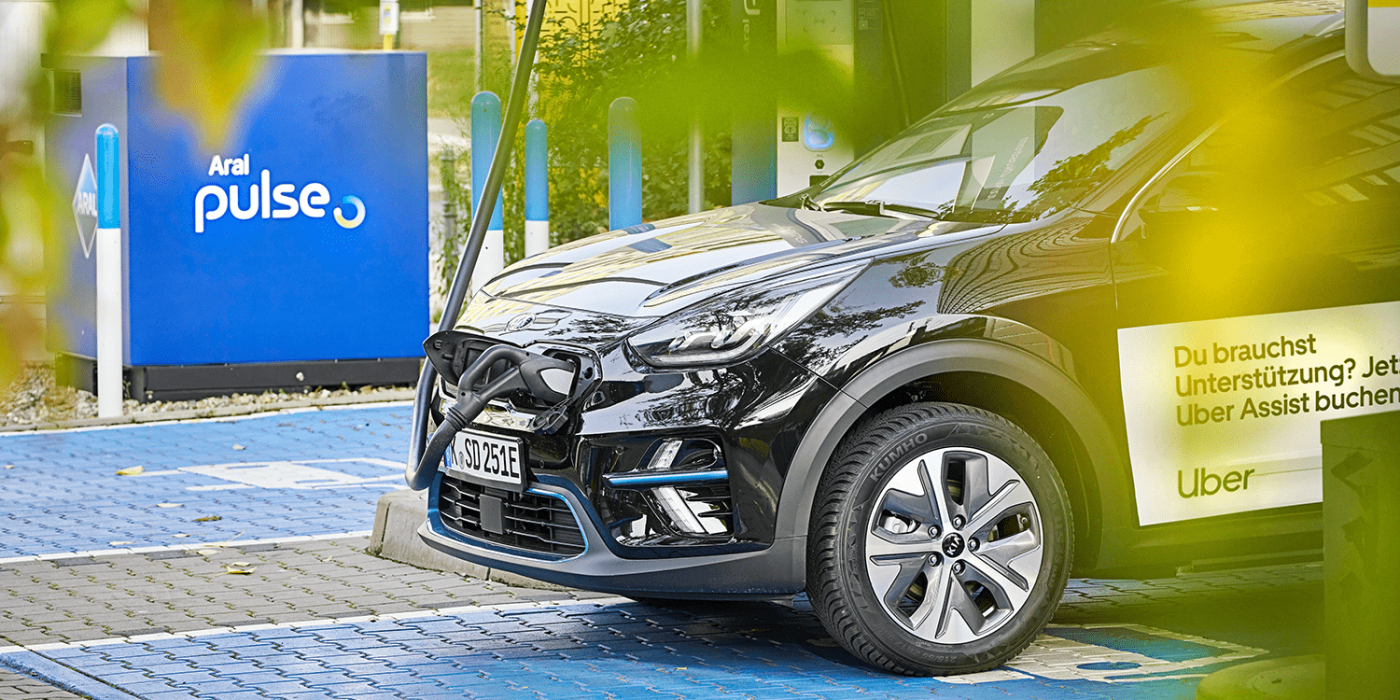NYC: Ride-hailing companies must turn 100% EV by 2030
Uber, Lyft and Co. must manage entirely electric car fleets by 2030 if they want to continue to offer ride-hailing in New York City. Mayor Eric Adams’ announcement will affect 100,000 vehicles in one of the world’s largest markets for-hire vehicles.
In his State of the City speech last week, New York City Mayor Eric Adams announced that Uber and Lyft will be required to be zero emission by 2030. He will likely implement his plan through the city’s Taxi and Limousine Commission, which regulates the taxi industry, including ride-hailing services.
Both companies welcomed the decision. “New York’s commitment will accelerate an equitable city-wide transition to electric, and we’re eager to collaborate with the TLC on an ambitious plan for a rideshare clean mile standard,” Paul Augustine, Lyft’s director of sustainability, said in a statement.
“We applaud the Mayor’s ambition for reducing emissions, an important goal we share,” Josh Gold, senior director of policy at Uber, said. “Uber has been making real progress to become the first zero-emissions mobility platform in North America, and there’s much more to do.”
Indeed, Uber and Lyft aim for their fleet to be “100 per cent electric” by 2030, also driven by other cities and markets’ policies.
However, since both companies only offer an app to connect drivers with riders, they need to incentivise drivers to make the switch. Uber, for example, is running partnerships with Hertz to provide drivers with electric vehicles at preferential conditions. In the US, said the collaboration has resulted in nearly 50,000 drivers having rented a Tesla through, completing more than 24 million fully-electric trips and over 260 million electric miles, according to Hertz. The two companies announced the programme in October 2021, offering a preferred weekly rate for Hertz rentals, including insurance, essential maintenance and unlimited miles. They also have initiatives such as Uber Electric and Uber Green, allowing electric car hire drivers to charge more.
Lyft announced the move to zero emissions by 2030 in the summer of 2020. Yet the company is banking on decreasing EV costs so drivers may switch more efficiently and focus on charging so far, i.e. in cooperation with EVgo offering discounts.
New York has been charging up for some time
Talking about charging infrastructure, the New York City Mayor referred to the city’s advances. NYC also targets a zero-emission municipal fleet, brought the transition forward five years from 2035 to 2030 in 2021 and has since started buying electric vehicles of various makes. The recent funding agreed upon earlier this month would further flow into charging infrastructure.
Also, at the state level, New York has progressed with mobility targets. In September last year, Governor Kathy Hochul willed that only zero-emission and light commercial vehicles may be sold from 2035 and introduced quotas leading towards the targets. Starting with the 2026 model year, automakers in New York State must sell an increasing number of zero-emission vehicles each year. This rate begins at 35 per cent and increases to 68 per cent by 2030 before reaching 100 per cent in 2035.
Governor Hochul had earlier also approved a bill to continue the EV Make-Ready scheme launched by her predecessor Andrew Cuomo in 2020. The programme banks on public-private partnerships with utilities and charging equipment manufacturers expected to help install 50,000 AC and 1,500 DC charging stations in the US by 2025 through a cost-sharing programme.
Decarbonising ride-hailing
New York is not the only city regulating the for-hire industry. In the US, California requires ridesharing companies to electrify their fleets by 2030, ahead of the ICE sales ban coming in 2025.
In Europe, London is foremost in pushing for electric cabs, primarily by ultra-low emission zones that make it expensive to drive through the city in a non-electric car. Uber has been working towards a 100% electric platform in London by 2025, according to Uber UK. The company had already asked drivers in the British capital in 2017 to look into hybrid, if not all-electric, cars. Back then, drivers would receive up to 5,000 pounds if they scraped their diesel. Now Uber has financing partner Moove reportedly, which targets to scale to 10,000 cars by the end of 2025.
Uber drivers may access the ‘EV Hub’ via the drivers’ app to check for options to electrify in their respective markets internationally.





0 Comments